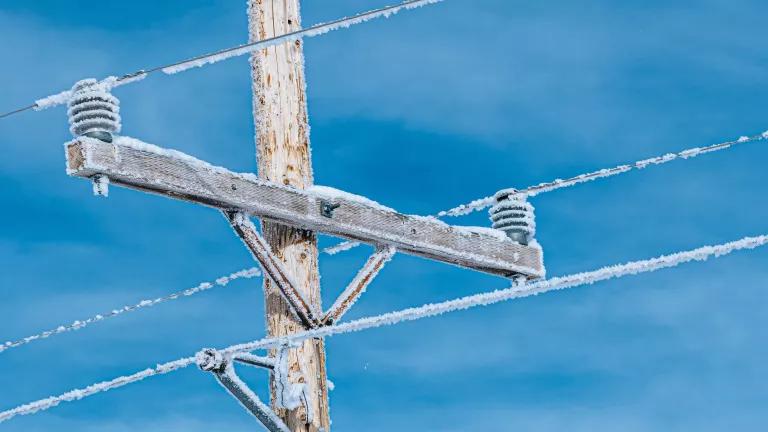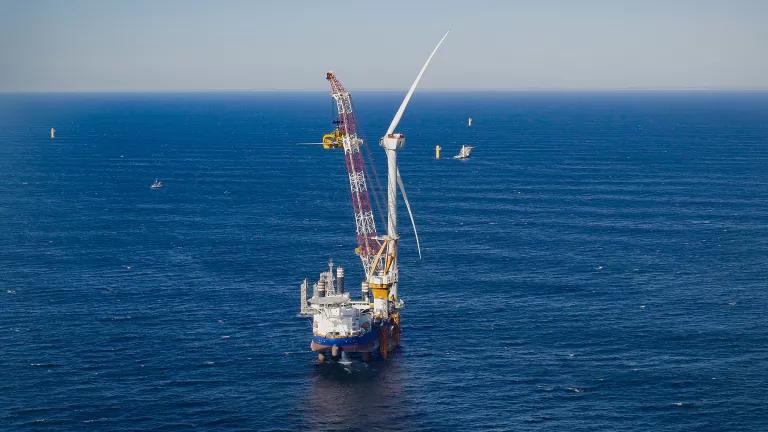The Grid Is A-Changing—and Grid Operators Need to Change With It
Fossil fuel interests claim that the EPA’s proposed rules will endanger grid reliability. We untangle these arguments to show that we can improve grid reliability while also cleaning it up.

Winter storms have exposed weaknesses in the reliability of the power grid.
Brett Sayles
When it comes to the current sturm and drang over the reliability of our electric grid, two separate things are true—but are, unfortunately, being unjustly conflated.
First, the grid is changing, and grid operators need to change with it to ensure that the lights stay on when we need them most.
Second, upcoming standards from the U.S. Environmental Protection Agency (EPA) will help move the power sector toward a cleaner, less-carbon intensive future.
Pulling out a playbook they have used for more than five decades, fossil fuel interests have taken these two separate propositions, conflated them, and are now arguing that the EPA standards will endanger grid reliability and should be watered down or delayed. (NRDC senior attorney David Hawkins has documented this pattern over and over.)
The fact of the matter is, we can improve the reliability of the power grid while also cleaning it up. A cleaner grid will be a more reliable grid.
The electricity grid’s profound changes
Driven by the dramatic cost reductions, solar, wind, and battery power are increasing rapidly, while old, dirty coal plants are closing at a record pace. Just 15 years ago, coal power made up nearly half of the electricity produced in this country. It’s now down to less than 20 percent and forecast to be just 15 percent next year. Meanwhile, renewable energy accounts for more electricity production than coal, and it is in the midst of a steep jump in production. Gas plants that currently generate the largest portion of the electricity are projected to be used less and less as the renewable buildout takes place.
With the changes underway because of market forces and the incentives from the Inflation Reduction Act, power sector carbon dioxide emissions could drop 66–87 percent by 2035 from 2005 as the deployment of wind and solar capacity accelerates, a recent collaboration from analysts at NRDC and at industry and government organizations concluded.
Regulators need to respond. Last year, the Federal Energy Regulatory Commission (FERC) required each regional grid operator to submit a report on its system’s changing resource mix and load profiles over the next five and 10 years.
Those reports are in, and now FERC and the grid operators need to act. Here are ways FERC and grid operators can make the system more reliable:
- Quickly finalizing a proposed rule that would bolster transmission planning within grid regions and start a rulemaking to better plan transmission upgrades between the regions
- Requiring utilities to undertake long-term planning that considers multiple scenarios so that the transmission lines needed can and will get planned and built
- Increasing demand response and other energy efficiency resources that can quickly reduce power demand during extreme weather events, decrease dependence on vulnerable fossil fuels, and avoid the need for some grid buildout
- Setting market rules to capture the full potential of flexible battery storage resources
A recent NRDC report lays out the specific actions that regional transmission organizations should be taking now to get more transmission lines built and more new power sources connected to the grid.
Untangling industry’s reliability claims
In their effort to shift blame to the EPA, fossil fuel interests and other opponents of carbon rules are conflating two types of reliability arguments. In comments that NRDC and our allies are delivering to the EPA and FERC tomorrow, we are going to untangle these arguments and show how each can be solved.
There really are two distinct types of reliability concerns.
The first type is exemplified by short-duration, unpredictable events such as winter storms, summer heat waves, or other extreme weather. Last summer saw unrelenting heat in Texas and the Southwest, supercharged hurricanes in Florida, and unexpected floods from Yellowstone to Vermont. Extreme cold caused catastrophic blackouts in Texas in 2021 and wreaked havoc over much of the middle of the country a year ago. In those extreme events, it was the coal and gas plants—not the renewables—that failed to deliver. We’re caught in a vicious cycle: Power plant emissions make climate change worse, and climate change impacts make keeping the lights on harder.
The EPA’s proposed rules, however, are designed with a simple built-in mechanism for responding to these extreme weather events. The emission limits and capacity factor limits in the proposed rules are framed on an annual average basis. If a plant has to operate at a high capacity during a winter storm or summer heat wave, it can still readily meet its annual average limit with minimal impact on its operation the rest of the year. EPA emission rules simply will not compromise power companies’ ability to run their units extra hard during such events.
The second type of reliability concern arises if grid planners have planned for new resources—from renewable generation to transmission to retrofitting existing plants with pollution controls—but the delivery of those resources is delayed. First, the proposed rules will give grid planners timely information that they lack today to spot and head off any such problems earlier. And second, the Clean Air Act allows for variances that can adjust compliance timetables if necessary to cope with such delays.
Industry and grid operators need to do their jobs
So rather than blame the EPA, it’s incumbent on industry, grid operators, FERC, and others to focus on the changes to the grid that are coming whether or not the EPA issues its new carbon standards, It’s up to FERC, the North American Electric Reliability Corporation, grid operators, and utility executives to make sure that their systems keep pace with that change.
Fortunately, recent studies show that the grid can handle the additional changes to the power system likely from the EPA regulations. An analysis commissioned by NRDC and our partners showed that PJM, the nation’s largest grid operator, can maintain reliability under the EPA standards during the hottest summer week or coldest winter week even if solar and wind generation were unexpectedly low. (Here is Amanda Levin’s blog on this study.)
The EPA’s proposed rules are modestly incremental to the business-as-usual changes and are designed to accommodate reliability while reducing emissions. If, however, specific reliability issues arise in the course of implementing these standards, states and the EPA can use the Clean Air Act’s authority to issue variances in specific cases. No additional reliability mechanism is needed. We can curb power plants’ carbon emissions and keep the lights on at the same time.
This blog provides general information, not legal advice. If you need legal help, please consult a lawyer in your state.




